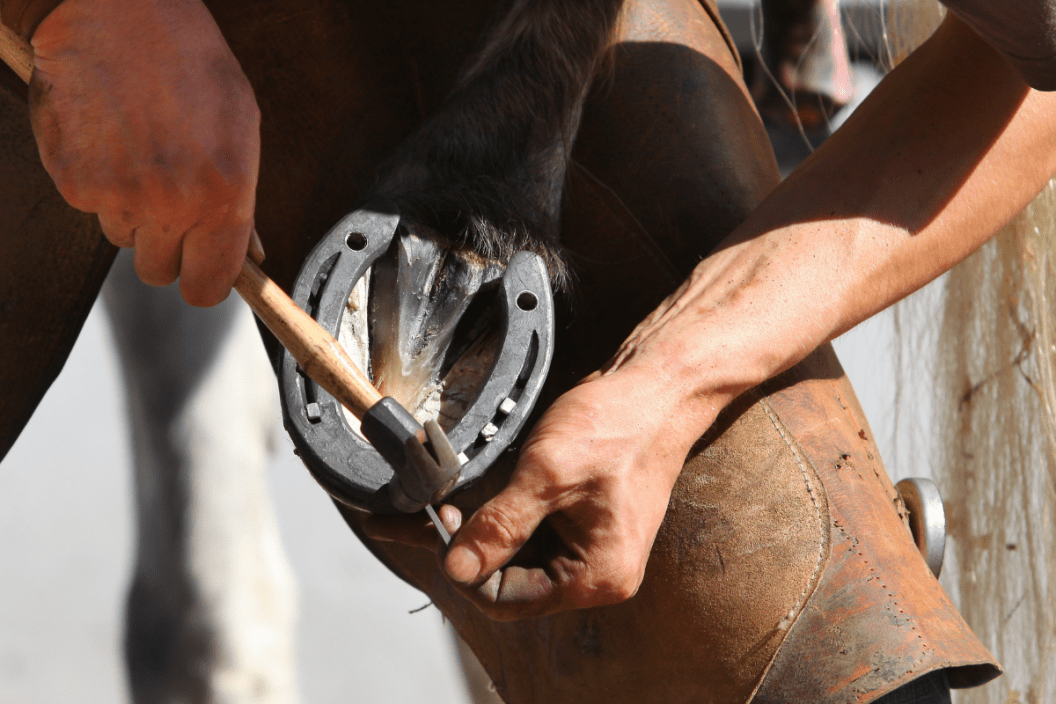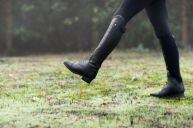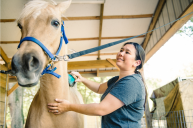Who invented horseshoes, and why are they so important?
Whether it's used as a good luck charm or to keep horses' hooves protected, the horseshoe is an important part of the United States equestrian culture. But what is the history behind the U-shaped metal shoes on horses' feet?
For centuries, pros known as farriers have been involved in horseshoeing and maintaining hoof care for horse owners. And while true origins of who exactly invented the horseshoe are unknown, they are alleged to have originated from the Romans - as traced back to the Roman poet, Catullus, where in the 1st century BC, he talks about a mule losing his shoe.
A Brief History of Horseshoes
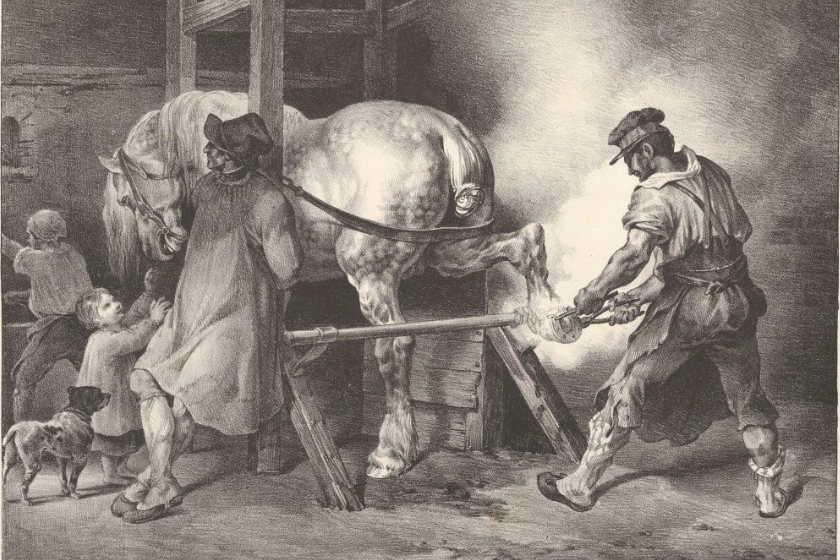
Heritage Art/Heritage Images via Getty Images
The first-ever mode of transportation we discovered is undoubtedly by horseback. Long before any trains or airplanes ever existed, we relied on our trusty steed to get around. But it wasn't until 400 BC when there was evidence of the earliest forms of horseshoes. (Thanks to a pair of bronze horseshoes with nail holes found in an Etruscan tomb in 1897.) The horseshoe was born out of necessity: In parts of Northern Europe where the weather is frigid and wet, horses had trouble getting ahold of the ground with just their bare horse's hooves - and ta-da! The first concept of the cast iron horseshoe is born; the idea of nailing metal shoes to a horse's feet.
Early adaptations of the horseshoe were made from various materials including plants, rawhide, and leather strap gears that were referred to by the Romans as "Hipposandals." (Yes I know, the modern horseshoe doesn't have anything to do with hippos OR sandals!) While in ancient China, horse owners made hoof boots out of woven plants to protect their horses' feet. Horseshoeing became so common that by the late 1800s, classes were available for farriers to learn proper hoof care, horseshoeing, and the right farrier tools and farrier supplies to use. Modern metal shoes today are commonly aluminum steel horseshoes.
Why Do Horses Need Horseshoes?
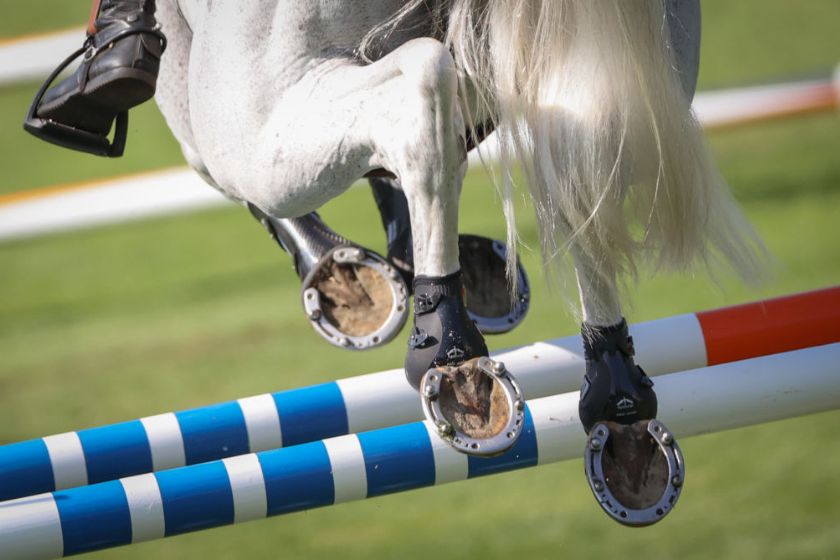
Friso Gentsch/picture alliance via Getty Images
Prevention of ammonia infection from urine-soaked hay is an important reason horseshoes are used today, and the main reason they were historically implemented in horse care. If a horse spends most of its day inside the stable and the hay is only cleaned out once a day, a lot of ammonia builds up on the substrate within the enclosure. A horseshoe lifts the hoof off the ground, giving a protective barrier so that the hoof does not come in contact with the wetter areas.
Sometimes, shoes are worn on all four feet while other times, a horse only dons shoes on its front feet. The purpose of the horseshoe is often to protect the hoof wall. Show jumping or race horses can develop cracks in their hooves, but a shoe helps strengthen the landing and offers added traction and additional protection, especially if the horse is traveling over long distances. Rubber can be placed between the hoof and the shoe for extra cushioning as well, common in carriage horses trotting along pavement. A lighter shoe or different types of metal shoes can be chosen as well.
Hoof health largely determines whether or not a horse needs shoes. Diet and terrain play a role in the reason for horseshoes on domestic horses, while wild horses roam free of shoes. On a farm, horses do not have to forage for food and will never go hungry. Hard ground can cause concussive damage to the hooves, increasing the risk of navicular disease and other potential lameness issues. Mud can also weaken horse hooves, and this weakening is cause for horseshoes. Shoes can be imperative for hoof protection.
Corrective shoeing is also used to help equines struggling with issues like laminitis, an inflammation of the tissue between the hoof and coffin bone.
Debate exists between horse owners about whether domesticated horses are better off "barefoot or shod." Generally, horses on rough or hard terrain, such as those that jump, race, or pull loads, use shoes. Horses that are mostly just pets hanging around in their amazing horse barn might be less likely to wear a shoe, but other variables would have to be examined to decide if the horse is better off with a shoe. Both hot shoeing, where the farrier heats and shapes the shoe to the exact fit, and cold shoeing, where the farrier will simply fit the correct shoe size to the horse's hooves, are techniques used to shoe horses.
Whether your horses wear shoes or are barefoot is a decision made between the owner, farrier, and veterinarian. Shoes might be in the best interest of the horse, from working horses to dressage or race horses, but the equine might be okay without them on all four hooves or on any of them at all. It's all about how horseshoes help horses!
Stacey Venzel also contributed to this story.
This article was originally published October 22, 2020.
